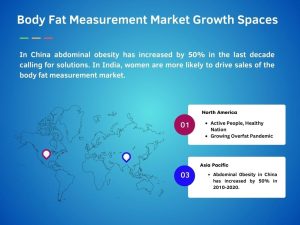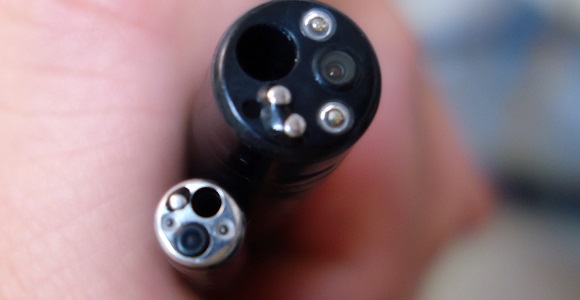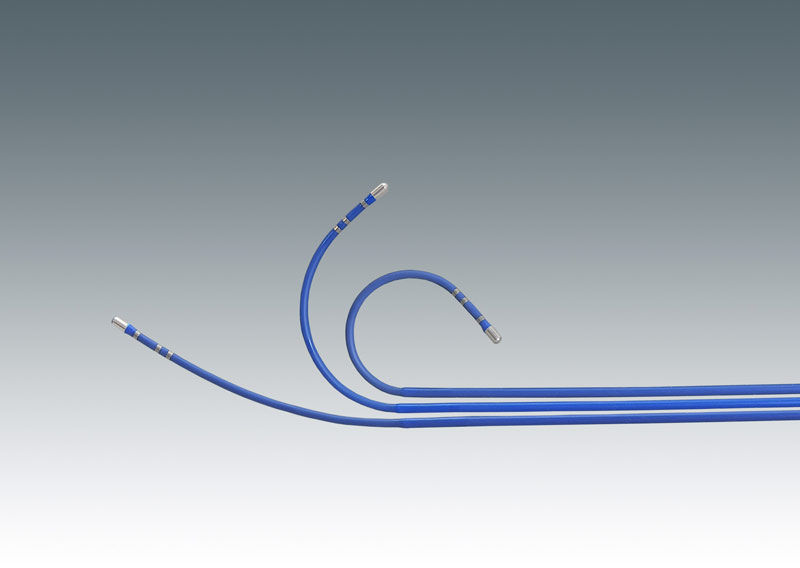The body fat measurement market is expected to hold a handful of opportunities for business due to the inciting over-fat pandemic, estimated to unlock revenues of USD 1,078.99 million by the end of 2027.
Working out hard and expecting objective feedback on progress is natural for a person while stepping on the scale. But knowing only body weight isn’t enough, body fat percentage is important. It can offer insights into what body weight comprises. It is a more precise indicator of overall health than body weight. As a result, it drives a share of the body fat measurement analyzer market.
A high scale on it is indicative of a high risk of lifestyle diseases. The physical location of fat and the amount contribute to disease risks. Knowledge of the fat content provides insights into health. Especially in the pathologic aftermath of obesity. Health-tech companies are developing body fat measurement systems that monitor health. These devices worked on precision to early diagnosis of diseases. Sensor technology and internet communique have transformed the body fat measurement market. Control of medical data is crucial for health analysis.
As an indicator of physical health, body fat should be within a range. A high body fat percentage could increase the risk of developing heart disease. It can lead to high blood pressure and diabetes. It can be linked with difficulties in breathing. In some cases, it’s linked with sleep apnea. This article intends to offer a holistic overview of the body fat measurement market. It will further brief on technologies in body fat analysis. Offering insights on body fat measurement market strategies this article is worth reading.
What Drives the Body Fat Measurement Market to Expand?
Over fat Pandemic- Calling for Health Actions
A study on over fat grownups was published in Frontier- a health journal. As per this study, the United States is facing an “Over fat Pandemic”. Rising obese populace calling for immediate health action. The excess body fat is linked with cardiometabolic disorders. It can increase if further ignored. Obesity remains a key issue faced by about 30 developed countries. It is foreseen to continue in the coming decade. As a result, the body fat measurement market will gain traction of growth.
In Iceland, New Zealand, and Greece over 90% of adult males are over fat. About 50% of children are found to be overweight. Obesity levels in America are likely to remain high in the coming years. It’s due to an unhealthy diet, and lack of exercise. This is likely to drive sales of the body fat measurement market.
Collective Response to Obesity Menace
In many countries, governments have stepped in with many initiatives. These moves are directed at tackling overfat, obesity, and type 2 diabetes. Motivating people to active and healthy lifestyles. Digital integration of diabetes care devices with fat measurement has improved efficiency.
Data collected from these devices was used further. Especially in the treatment of diabetes. The government has joined hands with industry players. Partnerships are made to promote healthy eating. Alongside they encourage health platforms to discuss lifestyle changes.
Societies are sponsoring health campaigns. Collective exercise in clubs to promote physical activities. Countries such as the UK and Ireland opted for salt reduction programs. These regulate salt use and keep people informed about balanced choices. FDA approves dietary supplements. Supplements validated after standard tests. Governing standards increased the sureness of consumers. Brands can earn loyalty points here. These initiatives are foreseen to drive a share of the body composition analyzer market.
Body Mass Index (BMI) vs. Body Fat Percentage, which is a better indicator in the Body Composition Analyzer Market?
Body mass index is the most used method for the body composition measurement. It takes both height and weight into account while calculating BMI. Doctors use this method to screen patients for conditions such as underweight or obesity. They prescribe them certain medications.
BMI calculates body weight which can be misleading. There is no provision for separation between fat and muscle in BMI. People with healthy bones may end up as obese. This is an issue with the BMI method. Many research studies have analyzed BMI for its ability. They concluded its limitations for screening conditions of obesity.
Body fat measurement wins the argument as a better indicator. It is the proportion of fat mass relative to total body mass. Insight on body fat helps in assessing overall composition. It covers the limitations of the BMI technique. Having too much body fat can lead to premature death and heart conditions. This alarming situation has raised the demand for the measurement of body fat.
It will create market space for various devices. Body fat is lower than the substantial range can also cause some issues. Sufficient body fat is needed to regulate glucose. It’s needed to manage energy storage and control cholesterol. Body fat aids in reproductive metabolism. Without enough body fat, these functions will be disturbed.
How do Businesses Leverage Technology to Offer Precise Outcomes on Body Fat?
Innovative Smart Scales for Multiple Applications, Dominant Segment in Body Fat Measurement Market
Smart scales are popular among users. Certainly, among those who are willing to track their progress daily. These keep track of body fat along with monitoring heart rate. Alongside these scales can offer air quantity measurement in the body. The Internet of Things (IoT) has improved the purpose of these scales. Users can connect smartphones with these scales and other wearables. It’s where they can access information on health and track their fitness goals.
Some companies developed body composition analyzers that can offer insights into full body composition. Measurement includes weight, water percentage, muscle, fat, and bone mass. These scales are accessed with apps and via Wi-Fi. Some smart scales offer nutritional tracking. They offer weather forecasts which assist in workouts.
Calipers- Skin fold Method
These are the cheapest and most portable methods to calculate body fat. Users can measure fat by at least three points on the body- abs, chest, and thigh. Skin folds are measured through these devices. These are integrated with online apps total body fat percentage is calculated. These devices are popular among users due to their ease of use. These offer the best trade-off between accuracy and cost.
Air displacement technology- Bod Pod
This technology relies on measuring weight before entering into a pod. Later the air displaced is measured. This method is convenient for underwater weighing. It’s suitable for people of all ages or even for disabled people. Pods are available only in academic institutes or research centers. This creates convenience concerns. This segment is likely to mark a stagnant growth in the body fat measurement market.
DEXA Technology- Precision Factor Attracting Investors to Body Fat Measurement Market
This device is used to measure bone density but is applicable in learning body composition. These methods rely on the absorption of the beams into body parts. Technicians calculate lean mass and fat content through these readings. These machines are expected to gain traction of growth in the coming years. It is due to ease and preciseness. It is referred to as the gold standard method to calculate body fat. It’s precise to show the location of fat in the body. This method is anticipated to gain traction adoption in the body fat measurement market in the upcoming decade.
Strategic Takeaways for Body Fat Measurement Market Players
Making Wearables Reliable
Commercial wearable body composition devices give precise results in lab settings. These devices need to give accurate measurements when used by consumers at home. There is the chance of errors in models that vary from producer to device type. There is space for redesigning and development of new models. Companies must consider the sensitive nature of body composition measurement. To consider a device reliable it should give more or less similar metrics across distinct states.
Renewed Partnership Space
Health insurance companies can enter into partnerships with the body composition analyzer market. Through these players can attract consumers who are interested in taking control of their health. Body composition analyzer market companies will get consumers who are protective measures for their families. Partnerships with wearable companies can offer a wide consumer base. Companies can generate proactive engagement with consumers.
Technologies make medical devices more connected and intelligent. As a result, the healthcare records space is getting advanced. It’s the right time for market players to embrace wellness strategies. These will help customers lead healthy lives.
Companies are opting for strategic concerts to provide on-site body composition testing. Brands can organize campaigns in association with fitness centers. This is the right way to provide information on body composition analysis.
Where are Lucrative Growth Spaces for Market Players?

As discussed above in this article, the US is projected to remain under threat of an over-fat pandemic for at least a few more years. This means it’s likely to remain a major market for body fat measurement. The US, Canada, and Mexico are estimated to hold the major share. Initiatives such as “Active People, Healthy Nation” in the United States are helping people to remain active. This initiative encourages cycling and walking. Aimed to resolve over fat issues. Increasing people’s presence and advanced technology have led to growth in the body fat measurement market.
Businesses may experience lucrative growth in the Asia Pacific region owing to the rising health-conscious youth populace. Increasing obesity issues in these countries contribute to the sales of fat measurement instruments. In China abdominal obesity has increased by 50% in the last decade calling for solutions. In India, women are more likely to drive sales of the body fat measurement market. This is due to the higher prevalence of obesity among women compared to men.
Future Outlook
It is expected that the coming decade will see traction of growth in medical devices. Technology is integrating these devices. It is likely to improve functionalities to a great extent. Smartphone integration and 3D tracking are breakthroughs that will pave the way for an improved body fat measurement market in the coming years.
References-
National Library of Medicine- Revisiting the global overfat pandemic
Center for Disease Control and Prevention- Active People, Healthy Nation SM



